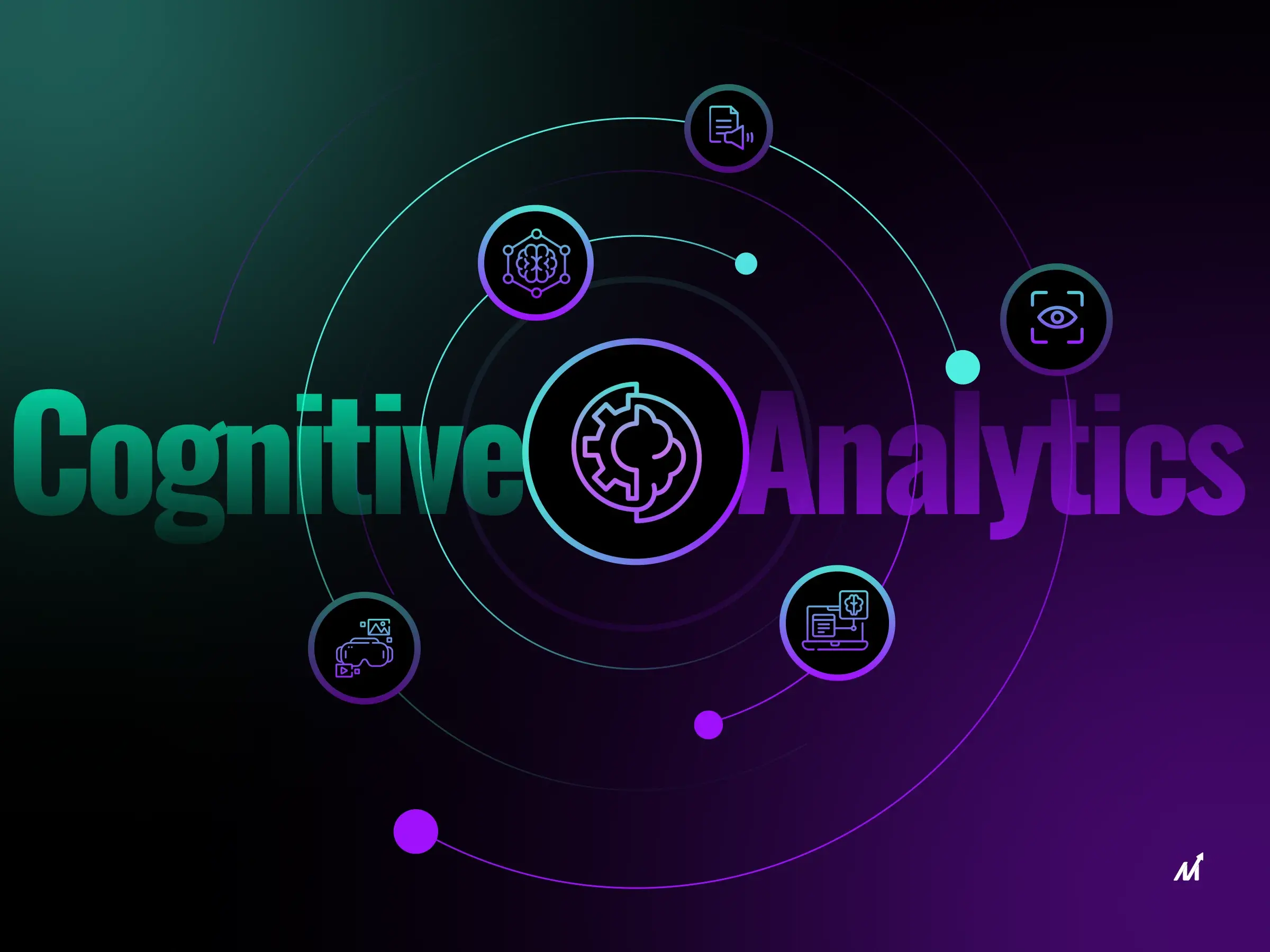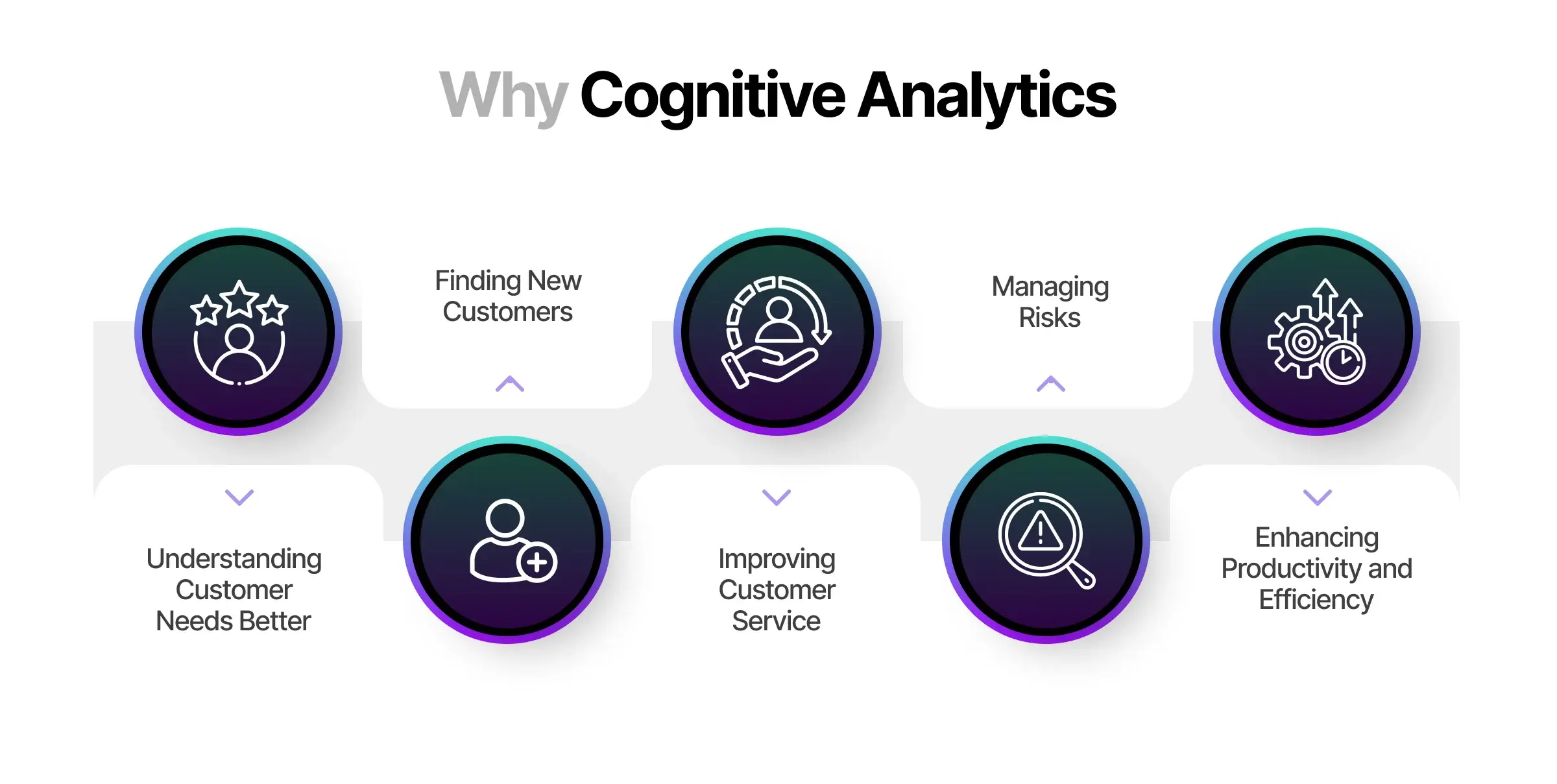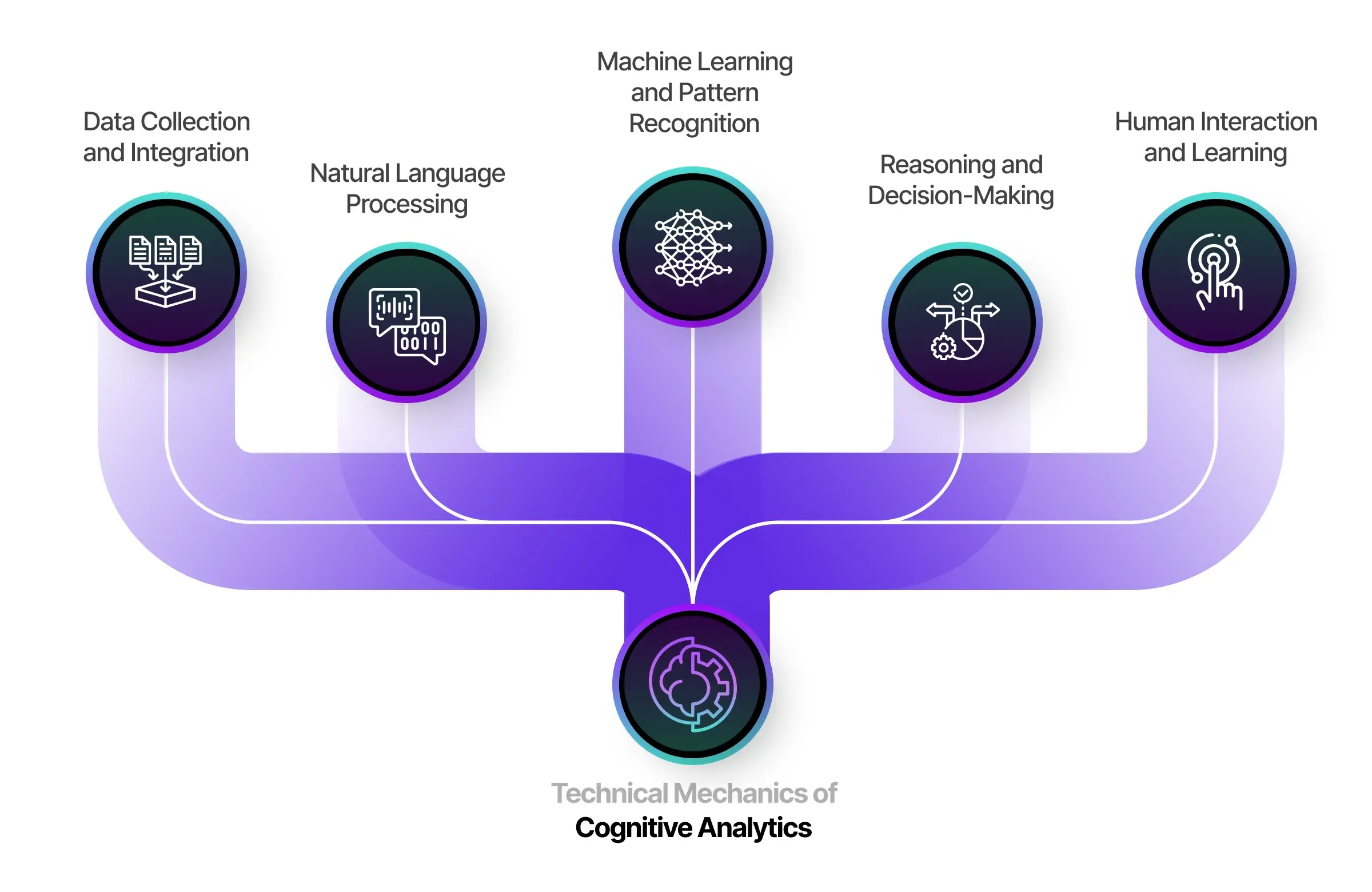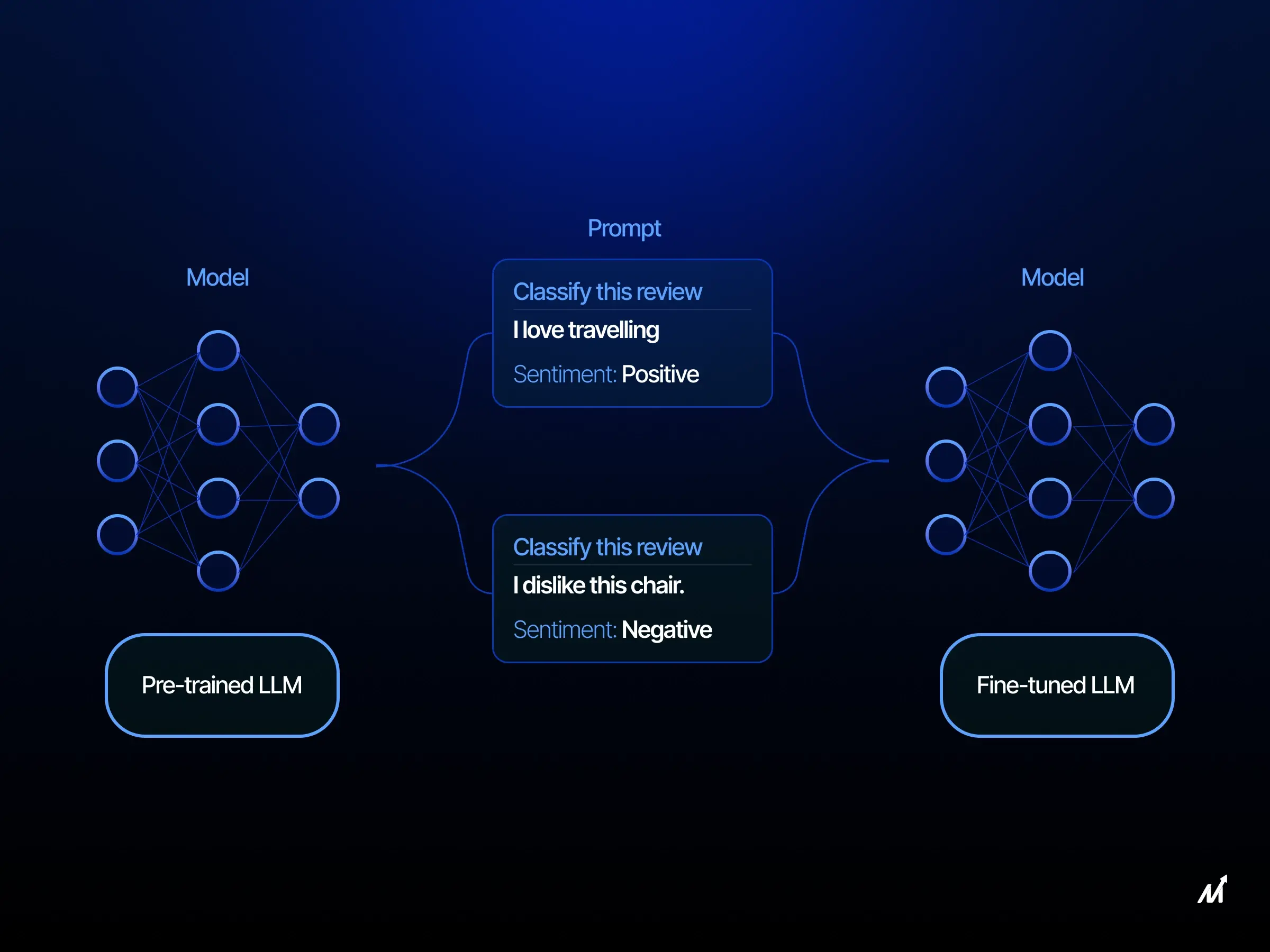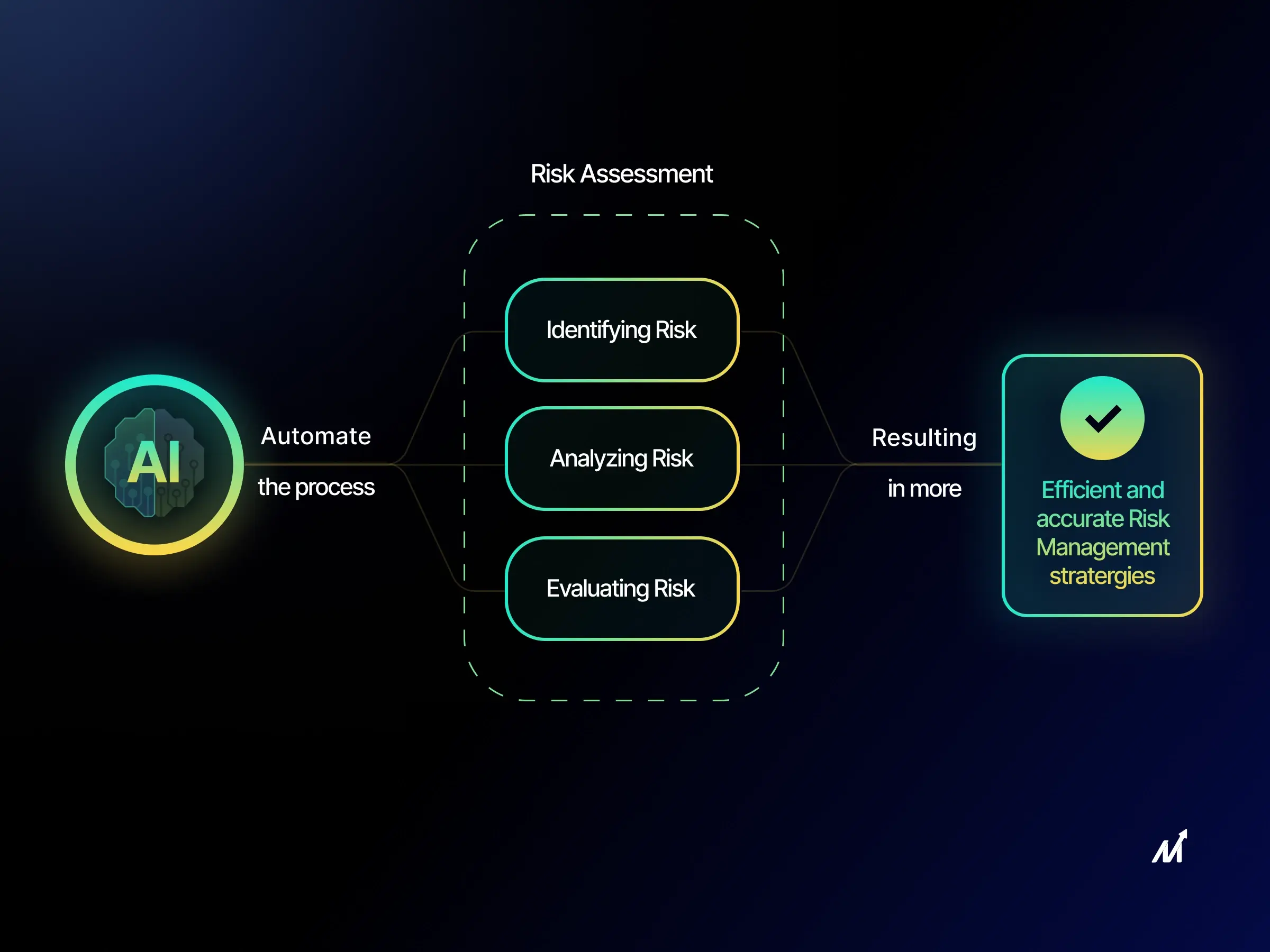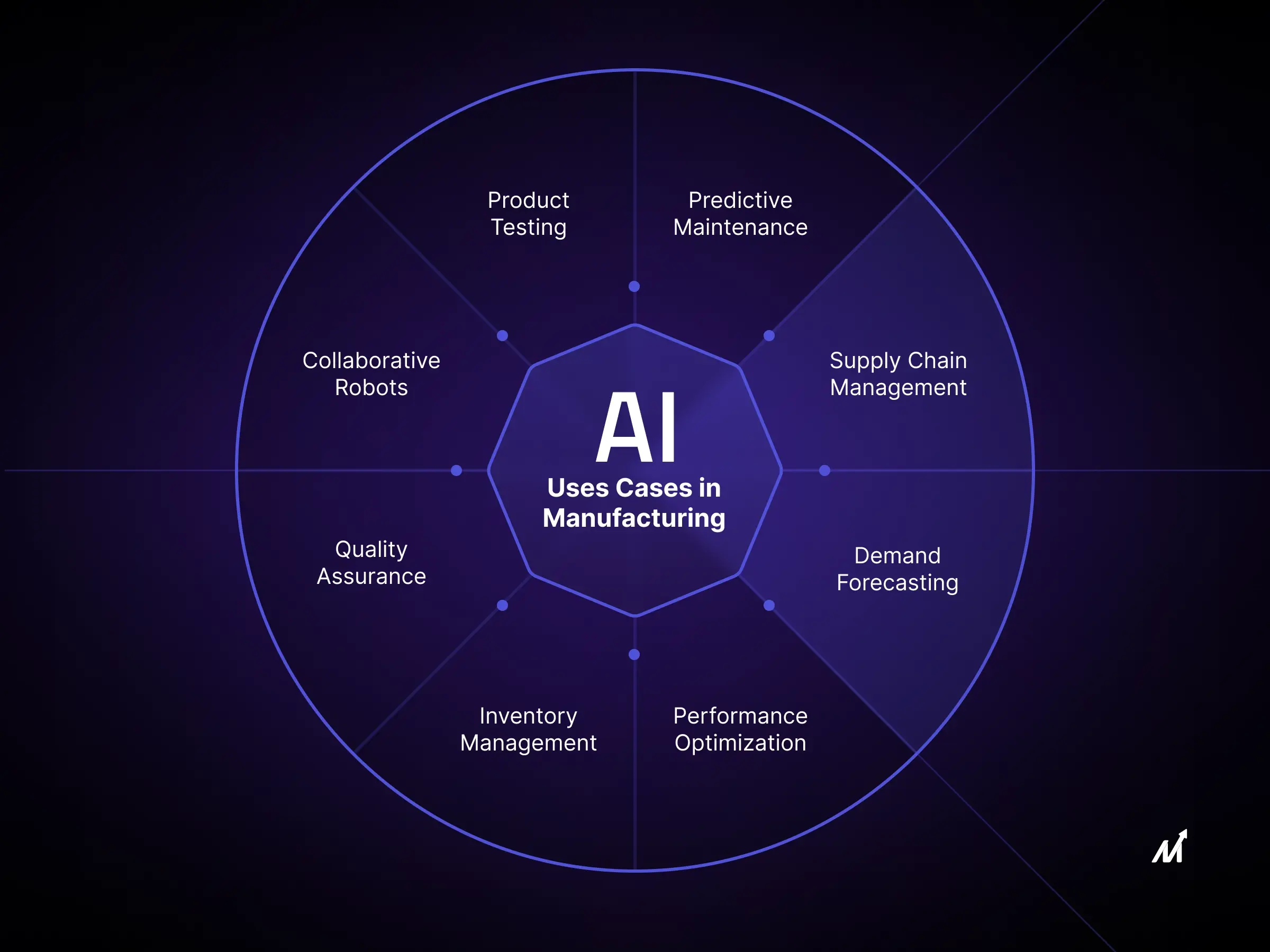In the early 2010s, a robot named Baxter debuted in factories. Additionally, this giant robot, six feet tall and 300 pounds, had two arms and could show expressions with its digital eyes. Baxter was special because it used AI to work right next to people. It learned from humans, improving at tasks over time, just like a student learns from a teacher. However, Baxter didn’t sell as well as expected, and its maker, Rethink Robotics, went out of business in 2018. A German company, Hahn Group, then bought Rethink Robotics and started developing a new robot, Sawyer, based on Baxter. Baxter’s story is important because it shows that machines can safely work with people thanks to AI technology and cognitive Analytics.
The AI used in Baxter is about making machines think and learn like humans. Furthermore, JT Kostman, an AI expert, says this is just the start of how Cognitive computing can change our work. Moreover, this article will look at how Cognitive Analytics is being used today.
The Early Days of Cognitive Analytics
In today’s business world, companies are swamped with data, most of which is unstructured. Consequently, this means the data doesn’t fit neatly into databases, making it hard to analyze and use for business decisions. Cognitive analytics is key here. It combines different data analytics tools to make sense of this messy data. Cognitive analytics is especially useful for businesses wanting to get smarter with their data use.
Returning to a key moment in AI history, the 1956 Dartmouth conference, we’ve seen a slow but steady rise in smart technologies. By 2019, experts like IDC predicted the cognitive analytics market would jump from $1.6 billion in 2015 to about $16.5 billion. This growth shows how important these technologies have become.
Moreover, these smart technologies are perfect for handling the new kind of data businesses face today: huge amounts coming from different places, mostly in text form. Additionally, a 2015 IDG report found that companies diving into data projects mainly use unstructured data from emails, customer records, and documents.
But there’s more data out there than many companies use. The internet contains useful open-source information, like legal and patent details, census data, and social media posts. Plus, data from Internet of Things devices adds another layer of complexity.
Ignoring all this data is a big risk. Luckily, with the rise of affordable, powerful computing, using smart tech like cognitive analytics is easier and cheaper than ever. This makes it a practical choice for businesses looking to stay ahead.
What is Cognitive Analytics?
Cognitive analytics revolutionizes how machines interact with business by emulating human thought processes. Additionally, it’s a sophisticated blend of artificial intelligence techniques like machine learning & natural language processing combined with neural network models. This approach allows machines to interpret complex data, recognize patterns, and understand context more like a human brain and less like a traditional computer.
In practical terms, businesses and entrepreneurs can leverage cognitive technology to analyze massive datasets quickly and accurately. For instance, healthcare can use patient records and research to suggest personalized treatment plans. In finance, it can predict market trends by processing global economic data, thus aiding in smarter investment decisions. Customer service systems powered by cognitive computing can understand and respond to customer queries with human-like understanding, offering tailored solutions.
The impact of cognitive computing extends beyond simple data processing; it’s about augmenting human decision-making with intelligent, data-driven insights. Consequently, this technology doesn’t replace human intuition but enhances it, leading to more informed and effective business strategies. Cognitive computing stands to reshape industries by offering smarter, context-aware advice, ultimately making businesses more adaptive, innovative, and competitive.
Why Cognitive Analytics Matters for Businesses?
Businesses are turning to cognitive analytics mainly to solve a big puzzle: how to create algorithms or set rules to understand massive amounts of data. Additionally, after collecting a lot of data, companies need a special approach to find important insights. Cognitive analytics and machine learning help make it easier and faster for businesses to sift through data and find what they need.
In today’s business world, cognitive analytics has become a critical tool for success. This technology offers unique insights by analyzing vast amounts of data. Therefore, helping businesses stay ahead in a competitive market.
Here are five key reasons why cognitive analytics matters for businesses:
1. Understanding Customer Needs Better
Cognitive analytics provides deep insights into customer preferences and behavior. Additionally, this technology examines customer data to understand what they need and want. By doing this, businesses can create personalized experiences for each customer, making them feel valued and understood. Consequently, this personal touch can lead to stronger customer loyalty.
2. Finding New Customers
Expanding a customer base is crucial for any new or established business. Moreover, cognitive analytics helps identify potential new customers by analyzing market trends and customer data. It can predict what customers might want in the future, helping businesses to tailor their products and services accordingly. This foresight is invaluable in attracting new customers and keeping them engaged.
3. Improving Customer Service
Good customer service is essential for any business. Moreover, cognitive analytics can automate routine tasks, allowing staff to handle more complex issues. This makes customer service more efficient and responsive. For example, it can help quickly resolve customer queries, reduce wait times, and provide more accurate information. This leads to happier customers and more efficient operations.
4. Managing Risks
Cognitive analytics is also great for risk management. It can process various types of data quickly to identify potential risks. This is especially very useful in industries like finance, where it’s important to understand and manage financial risks. Cognitive analytics helps compile and analyze information from different sources, making informed decisions to mitigate risks.
5. Enhancing Productivity and Efficiency
Finally, cognitive analytics can significantly improve productivity and efficiency in businesses. It helps predict market trends and customer behavior, informing better business decisions. Thus, this predictive ability is crucial for planning and resource allocation, ensuring businesses use their resources most effectively.
(Also read about: Adaptive AI)
The Technical Mechanics of Cognitive Analytics
Cognitive computing operates through a series of well-defined technical processes, and here’s how it works:
1. Data Collection and Integration
Firstly, Cognitive computing begins by collecting data from various sources within the business ecosystem. These sources range from structured databases to unstructured data streams like social media posts and customer feedback. Therefore, the primary goal is to aggregate diverse data into a centralized repository. This integration involves transforming data into a standardized format, ensuring it’s uniform and accessible for analysis. Therefore, this step lays the foundation for coherent data processing.
2. Natural Language Processing (NLP)
Secondly, At the heart of cognitive computing is Natural Language Processing (NLP). When textual data is provided, NLP algorithms break it into its fundamental components: words, phrases, and sentences. Simultaneously, NLP analyzes the context, identifying the meaning, sentiment, and intent behind the text. This deep linguistic understanding allows the system to deal effectively and accurately with textual data without ambiguity.
3. Machine Learning and Pattern Recognition
Furthermore, Machine learning algorithms take center stage in cognitive computing. They sift through the integrated data, seeking patterns, correlations, and anomalies. This is not a rigid rule-based process but a dynamic learning one. Machine learning algorithms adapt and improve with each encounter with data. Consequently, they recognize patterns that might not be apparent through traditional analysis methods. Think of this as a continuous learning process, where the system better understands data as it processes more of it.
Pattern recognition, a crucial aspect of cognitive computing, involves identifying recurring structures and relationships within the data. Consequently, this can include recognizing customer behavior patterns that lead to specific outcomes or identifying trends in financial data that impact decision-making. It’s about finding meaningful insights within the data based on learned patterns.
4. Reasoning and Decision-Making
Cognitive computing doesn’t just stop at pattern recognition; it involves reasoning and decision-making. Additionally, it assesses multiple factors, considers probabilities, and evaluates potential outcomes. These decisions are not arbitrary but based on logical processes and data analysis. It’s akin to systematically evaluating options and selecting the best action based on available information.
5. Human Interaction and Learning
Cognitive computing systems are designed to interact with humans naturally. Moreover, they can engage in conversations, answer questions, and provide insights. Their ability to learn from these interactions makes them even more powerful. Much like a human learns from experiences and feedback, cognitive systems refine their knowledge and responses over time; consequently, they become adept at understanding and serving users’ needs.
Ethical Considerations in Cognitive Analytics:
The responsibility that accompanies the power of analytics cannot be overstated. When these systems analyze amounts of data it is important to address concerns related to biases, privacy breaches, and the lack of transparency, in decision-making processes. Engaging in discussions about these concerns is vital, for establishing trust and promoting development. It is crucial to explore aspects such as:
Algorithmic bias:
Both data and their algorithms can show biases. This happens if the training data is too alike or if it includes its own biases. However, the solution is to use varied datasets! Include different types of people and backgrounds. Additionally, use fairness measures to watch and reduce bias in systems making decisions. It’s also key to have people oversee this process. They can find and fix any bias issues.
Privacy concerns:
Cognitive analytics might collect, keep, and analyze user data. To lessen privacy worries, use methods to make personal information anonymous. Additionally, always get a user’s okay before collecting and using their data. Also, businesses need to follow rules like the GDPR and the CCPA. These help protect the privacy of users.
Transparency and explainability:
Cognitive analytics can be tricky because it’s hard to see how the systems make decisions. This can lead to problems with accountability and trust. That’s where Explainable AI (XAI) comes in. Specifically, XAI techniques work to shed light on AI models’ decision paths. By understanding how a conclusion is reached, people can check if the system is fair and reliable. Furthermore, building trust in AI systems needs clearness and the ability to make sense.
Cognitive Analytics vs Predictive Analytics: How is Cognitive Analytics different from Predictive Analytics?
Cognitive Analytics and Predictive Analytics, while often mentioned in the same breath for their data-driven insights, serve distinctly different purposes for businesses and entrepreneurs. Firstly, Cognitive Analytics, with its AI-driven approach, delves deeper than just data interpretation; it simulates human reasoning, offering not just insights but also explanations and recommendations tailored to specific business scenarios. Moreover, this approach is particularly valuable in dynamic environments where businesses require not just data analysis but also contextual understanding and decision-making support. For instance, in customer service, cognitive analytics can interpret customer emotions and provide personalized responses, thereby enhancing customer experience and engagement.
On the other hand, Predictive Analytics excels in scenarios where historical data patterns are key to forecasting future trends, such as in inventory management or market analysis. It helps businesses anticipate future scenarios, enabling proactive decision-making. Moreover, the distinct value of each lies in their application: Cognitive Analytics as a decision-making partner offering nuanced insights and Predictive Analytics as a forecasting tool providing trend-based guidance. This differentiation is crucial for businesses to leverage the right analytics approach to align with their strategic goals.
Cognitive analytics Vs. Predictive Analytics: Snapshot
To better understand the distinctions between the two, let’s compare them side-by-side:
|
Aspect |
Cognitive Analytics |
Predictive Analytics |
|
Definition |
Cognitive analytics mimics human brain functioning, using pattern recognition, data mining, and natural language processing. |
Predictive analytics uses statistical models and forecast techniques to understand future events or trends. |
|
Primary Objective |
To simulate human thought processes in a computerized model, facilitating complex decision-making. |
To analyze current and historical data to make predictions about future events. |
|
Data Handling |
Manages unstructured data (e.g., social media, text, images) and structured data. |
Primarily deals with structured and numerical data. |
|
Learning Ability |
Incorporates machine learning and AI to learn and evolve from new data inputs and interactions. |
Typically uses existing data sets for statistical analysis and does not evolve autonomously from new data. |
|
Decision Making |
Provides insights and suggestions, assisting with decision-making. It can offer explanations and reasoning for its suggestions. |
Focuses on providing probabilities or risk assessments for future scenarios based on past data. |
|
Complexity of Analysis |
High – can process and interpret complex patterns and relationships in data. |
Moderate – focuses on specific patterns and trends to forecast future events. |
|
Real-world Example |
Healthcare: Cognitive analytics systems analyze medical data, patient history, and scientific research to assist in diagnosis. |
Retail: Predictive analytics used to forecast sales trends or inventory requirements based on historical data. |
|
Interactivity |
Highly interactive, often incorporating user feedback to refine results and learning. |
Less interactive, generally follows a set analytical process without input from the user during analysis. |
|
Use Cases |
More suitable for complex scenarios requiring nuanced understanding, like customer service bots or personalized recommendations. |
Ideal for scenarios where trend forecasting is essential, such as financial market analysis or demand forecasting. |
AI and Cognitive Computing
Artificial Intelligence (AI) and cognitive computing are pivotal in reshaping business strategies and operations. Additionally, AI equips businesses with the ability to automate complex processes, analyze large datasets, and make informed decisions. Cognitive computing takes this further, specifically, it enables machines to interact with business processes more humanistically, understanding nuances and emotions.
For instance, in the finance sector, AI algorithms are used by companies like JPMorgan Chase for fraud detection and analyzing transaction patterns to identify anomalies. Cognitive computing enhances this by understanding customer behavior patterns, thereby allowing for more personalized fraud alerts and customer service interactions.
In addition, in marketing, businesses use AI for customer segmentation and predictive analytics, as demonstrated by Netflix’s recommendation system, which analyzes viewing habits to suggest personalized content. Cognitive computing adds an empathetic layer, enabling companies to understand customer sentiments and feedback more deeply, refining marketing strategies accordingly.
In supply chain On the other hand, AI is a broader conceptmanagement, AI is utilized for predictive analytics and inventory management. For example, Amazon uses AI to forecast demand and optimize warehouse stocking, reducing delivery times. Cognitive computing can interpret market trends and consumer behaviors, facilitating more adaptive and responsive supply chain strategies.
These real-world applications underscore the value and competitive advantage AI and cognitive computing bring to businesses. Furthermore, AI offers the backbone of smart, data-driven operations. At the same time, cognitive computing provides a layer of human-like interaction and understanding, making business processes efficient and more aligned with human needs and behaviors. This synergy is crucial for businesses aiming to be at the forefront of innovation and customer satisfaction.
Cognitive Analytics Vs. Artificial Intelligence: A Showdown
Similar to the previous comparison, let’s look at the key differences between cognitive analytics and AI:
|
Aspect |
Cognitive Analytics |
Artificial Intelligence (AI) |
|
Definition |
Cognitive analytics focuses on using data analysis to simulate human-like thinking processes and decision-making. Therefore, it aims to understand and predict human behavior based on data. |
AI is a broader concept that encompasses the development of algorithms and models that allow computers to perform tasks that typically require human intelligence, such as learning, problem-solving, and language understanding. |
|
Objective |
The main goal of cognitive analytics is to understand and predict human behavior and decision-making by analyzing data. |
AI’s primary objective is to enable machines to perform tasks that mimic human intelligence, Additionally, this includes a wide range of applications from speech recognition to playing chess. |
|
Methods |
Cognitive analytics uses techniques like machine learning, natural language processing, and data analysis to gain insights from data; consequently, it makes predictions. |
AI employs various methods, such as machine learning, deep learning, robotics, and expert systems, to perform tasks that require human-like intelligence. |
|
Applications |
Cognitive analytics finds applications in understanding customer behavior and market trends; therefore, it helps in making business decisions based on data-driven insights. |
AI has diverse applications such as virtual assistants, autonomous vehicles, medical diagnosis, and even creative tasks like art generation. |
|
Human Interaction |
Cognitive analytics often focuses on understanding human behavior and decision-making but may not involve direct interaction with humans. |
AI systems can interact with humans directly, such as chatbots, virtual assistants, and even robots that work alongside humans. |
|
Examples |
An example of cognitive analytics is using data to predict which products a customer is likely to purchase based on their past behavior. |
An example of AI is a self-driving car that uses machine learning to navigate and make decisions on the road. |
Real-world Examples
Cognitive analytics is a smart way companies use AI and machine learning to understand and improve their services. Here are some real-world examples:
-
Microsoft’s Cortana, Apple’s Siri, and IBM’s Watson are well-known cognitive analytics tools. Moreover, they use AI to understand and respond to what people ask them, making everyday tech smarter.
-
Additionally, The Royal Bank of Canada uses this tech to examine how clients spend and interact. By doing this, they can offer customers more personal service and products, all while keeping things secure and easy to use.
-
The Lark app is another example. It connects to health devices and uses AI to give personalized health and fitness advice. Furthermore, it’s like having a smart health coach in your pocket.
-
Furthermore, USAA, a financial company, also uses cognitive analytics. They apply it to review policy applications quickly, deciding which to approve or reject more efficiently.
-
University of California, Los Angeles researchers use cognitive computing in healthcare. Consequently, they analyze patient records to find patterns that might indicate diabetes. This shows how cognitive computing can help medical research, making it easier to spot health issues.
[Also read about Large Language Model Applications]
Transform Your Business with Markovate’s Tailored Cognitive Analytics Solutions
Are you facing data overload, operational inefficiencies, or untapped growth potential? Markovate specializes in crafting bespoke Cognitive Analytics solutions tailored to your unique challenges:
1. Challenge: Data Overload
Solution: Markovate creates customized AI-driven data processing systems, unlocking actionable insights tailored to your data’s complexity.
2. Challenge: Operational Inefficiency
Solution: We build precisely tuned AI applications, optimizing your operations, reducing costs, and enhancing efficiency according to your specific requirements.
3. Challenge: Stagnant Growth
Solution: Discover uncharted revenue streams and opportunities through AI-powered market analysis; thus, predictive models designed around your business objectives.
4. Challenge: Risk Management
Solution: Predict, mitigate, and manage risks with advanced AI analytics, aligning with your business’s unique risk profile.
Markovate is your partner in creating tailor-made Cognitive Analytics solutions that address your precise pain points and elevate your business. Therefore, let’s journey to build the solutions you need for sustainable growth and success. Explore our AI consulting services.
FAQs
1. How can Cognitive Analytics enhance decision-making in business?
Cognitive Analytics can significantly improve decision-making by providing deeper, data-driven insights. It analyzes not just structured data but also unstructured data like customer feedback, social media, and market trends. This comprehensive analysis helps businesses understand customer behavior, predict market changes, and make strategic decisions.
2. What is the implementation timeline for integrating Cognitive Analytics into an existing business infrastructure?
The implementation timeline generally varies depending on the complexity of the business’s existing systems and the scale of data involved. Typically, it can range from a few months to over a year. The process involves data integration, system setup, algorithm training, and testing before full deployment.
3. How does AI-powered Cognitive Analytics differ from traditional machine learning processing business data?
Traditional machine learning often requires structured data and predefined models. AI-powered Cognitive Analytics, however, can handle unstructured data and uses advanced algorithms to learn and adapt over time, providing more nuanced and predictive insights.
4. Are there specific sectors or types of businesses that benefit more from Cognitive Analytics?
Sectors with vast data, such as finance, healthcare, retail, and e-commerce, tend to benefit significantly. Conversely, any business seeking deeper insights from large and varied data sets can leverage Cognitive Analytics for strategic advantage.
5. What are the key challenges in adopting Cognitive Analytics in an enterprise?
Key challenges include:
-
Integrating disparate data sources.
-
Ensuring data quality.
-
Training staff to use new tools.
-
Addressing privacy and security concerns.
A clear strategy and choosing the right technology partners can help mitigate these challenges.

